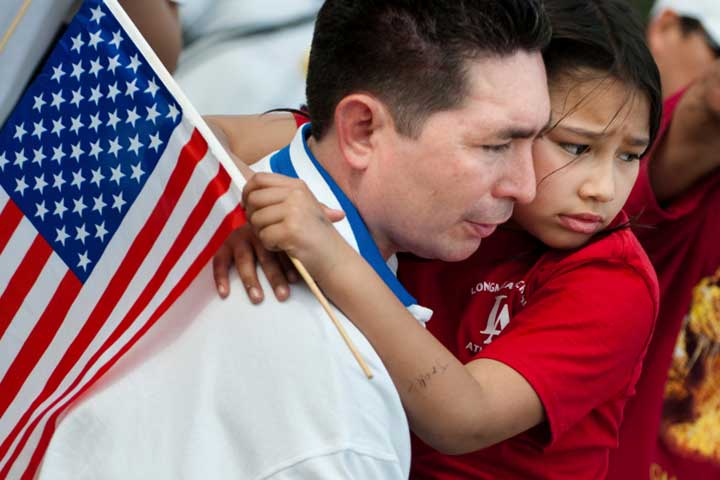
Commitment to family is both a driving force and source of hardship for Latino immigrants, according to a Florida State University researcher.
Threats to familismo — deeply held cultural beliefs about the centrality of family in daily life — are often a major source of stress for immigrants and can have a negative impact on their overall health and well-being as they move forward in a new country.
Joseph Grzywacz, the Norejane Hendrickson professor of Family and Child Sciences at Florida State, outlined those findings in an article that will be published in an upcoming issue of Cultural Diversity and Ethnic Minority Psychology. It is available now online.
“Immigrants to the U.S. confront many difficulties,” Grzywacz said. “Whether these difficulties produce health problems depends, at least in part, on whether you were prepared for some of those situations. The reason we care about those challenges is because it starts to unpack the black box on why some immigrants do well and others don’t.”
Grzywacz and his colleagues conducted interviews with 16 focus groups in Hispanic communities in California and Massachusetts. There were 93 total participants between the ages of 18 and 67. Fifty-two percent of the participants were male; 48 percent were female. Of that group, 59 percent spoke primarily Spanish and the majority of the sample (71 percent) had children.
They found an array of stressors related to competing threats to family, which they called “ambivalence.”
Across the different focus groups, improving the family’s quality of life was a main reason for migrating to the United States. But, many did not anticipate the negatives associated with it, such as the pain of parenting long distance during temporary separations.
Participants also expressed frustration with children not appreciating the sacrifices made to live in the United States and also noted that there were forced shifts in core cultural values following migration. For example, in many participants’ home countries, women were stay-at-home mothers. When they migrated, economic necessity demanded that mothers work, causing major changes in mother-child and husband-wife dynamics.
While dual-earner homes are the norm in the United States, immigrant families have little experience with this arrangement and few role models to follow.
“Immigrants often move to help the family, but then see the negatives it has on the family unit,” Grzywacz said. “The reality of ‘I have to help my family by potentially hurting them’ can have long-term consequences.”
Grzywacz noted that the big picture concern for this population group is how these stressors will affect the overall health of immigrant families. Researchers found that if immigrants were more mentally prepared for some of these challenges, they tended to handle the stress better.
“This information gives us ideas for interventions when an individual or family is struggling,” Grzywacz added.
Grzywacz, who is now the chair of the Department of Family and Child Sciences at FSU, completed much of the work while on faculty at Oklahoma State University.
Other authors on the paper are Sasha Rojas of University of Arkansas, Martha Zapata Roblyer and Rebecca Crain of Oklahoma State University and Richard Cervantes of Behavioral Assessment Inc. in Los Angeles.




